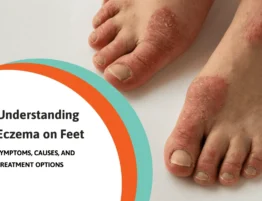
Ankle sprains are a common foot and ankle injury. When ankle sprains recur frequently or if not treated properly this can lead to chronic ankle instability. Proper treatment and evaluation are important as ankle sprains tend to be undertreated and not always thoroughly evaluated.
Basic anatomy of your ankle
The outside of the ankle is supported by three ligaments that connect the smaller leg bone, the fibula, to the bones of the foot.
Most frequently damaged ligaments
The anterior Talofibular ligament ATFL – The connects the fibula to the ankle bone called the talus. It runs forward from the ankle parallel to the ground. It’s function is to keep your foot from moving forward out of the ankle joint
Second most frequently injured
The calcaneal fibular ligament CFI- This connects the fibula to the heel bone and travels vertical to the walking surface. This ligament keeps your foot from rolling out of the ankle joint. It supports the subtalar joint which is the joint beneath the ankle. Its function is like a universal joint on a car. It allows your foot to move in different body planes. When you make big circles with you foot most of that motion is coming from the subtalar joint.
The posterior talofibular ligament – This ankle ligament connects the fibula to the talus the ankle bone and runs towards the Achilles tendon. This ligament is the least frequently injured.
Why do ankle sprains occur?
- Activities – certain risk activities are more likely to put you at risk of an ankle sprain. Any sports that require side to side motion such as racquet sports, tennis and pickleball. Sports that are ballistic and involve contact such as basketball, football and soccer. Activities that involve hiking over irregular terrain can also be riskier.
- Shoe gear – shoes that are broken down and not as supportive may also lead to a sprain.
- Foot types – Certain foot biomechanics are more likely to lead to chronic ankle sprains.
- Ligamentous laxity – some are born with ligaments that are very flexible such as Erlos Danlos syndrome.
- Neurological issues – you may have a mild case of drop foot from nerve damage. This could be from common peroneal nerve entrapment. The muscles that pull your foot upwards and sideways are weaker because of this condition.
Evaluation for chronic ankle instability
- Proper evaluation starts with a good history – The mechanism of your injury will likely help the doctor to determine what structures may be injured.
- Physical examination – There will usually be pain and swelling over the ligaments that are frequently injured.
- X-rays – these may be taken to insure there are no fractures.
- MRI – If a severe sprain takes place then imaging studies will be useful to determine the severity of the ligamentous damage.
Chronic ankle instability Treatments
This may require an extended period of time to rest the injury.
- Immobilization– depending on the severity of the injury the doctor may recommend the use of a Cam walker to allow the damaged ligament that were torn to repair properly.
- Physical therapy– to help promote healing and strengthen the muscles around the ankle. This can also strengthen the peroneal tendons that support the outside of the ankle.
- Ankle bracing– this may be used during healing and even for a longer period of time to protect the area from another sprain as you return to full activity
- Anti-inflammatories– these may help with pain and swelling during the early stage of the ankle sprain.
- Orthotics– custom made arch supports can help provide a stable base for the foot to stand on in the shoegear and reduce the frequency of recurrent ankle sprains.
- Surgery-Surgery may be performed to repair the ligaments that have become damaged and weakened and no longer provide support to the ankle. The ligaments may be repaired along with using tendons around the ankle to increase support to this area. This can prevent repeated ankle sprains.
- Nerve surgery– if it is from weakness because of neurological issues decompression of the common peroneal nerve may be performed. The common peroneal nerve tunnel can become tight, or the nerve tunnel could be damaged. Reference for my research paper.
What will happen if left untreated?
With repeated ankle sprains the possibility of getting arthritis in the ankle or subtalar joint beneath the ankle joint increases. Treatment for the ankle arthritis may include ankle scope surgery to clean out the damage in the ankle, Stem cell treatment with human cellular tissue products, see video below.
Two suggestions to help prevent the chance of having chronic ankle instability.
Proper evaluation and treatment
The first and most severe sprain you have is the most important to properly treat. A common mistake I see is patients may not get an ankle sprain looked at by a doctor. Or if they do they may go to the emergency room or urgent care. X-rays shoe there is not fracture. They may leave with an ace wrap or ankle brace and are told to ice it. In other words ankle sprains are under treated and under evaluated.
Ideally if it a severe sprain with a good history taken by the doctor and a complete exam and in some cases and MRI a better treatment plan could be determined. If it’s a third degree sprain meaning one or more ligaments of the ankle are fully ruptured than immobilization of the ankle may allow the ligaments to fully repair and retain there strength. So when in doubt see a foot and ankle specialist.
Consider trail running or hiking
Yes, I know this may sound contradictory and I’m speaking from my own experience. I’ve run all my life from college, through medical school and all the way through my sixties. However, starting in my sixties, I gave up running on concrete and asphalt. I started train running as it really reduced the wear and tear on my body from running on hard surfaces. I was amazed. However I was very afraid at first as I was prone to ankle sprains. I have found that I’ve dramatically reduced the number of sprains I have, and I believe its for three reasons.
- I’m extremely efficient and looking where I step every time! I got very lazy doing this on smooth surfaces.
- Muscle strength in my lower legs has increased. This is simply because the muscles that have to support my foot from moving side to side are being used more and I believe it protects me from having sprains and I can make a faster correction when I sense I’m about to sprain my ankle.
- I have found that trail running shoes are important to use. They are treads that have more grip and have lower profile which I believe lowers the center of gravity of my foot in the shoe. It also allows me to feel irregularities in the terrain and make adjustments better.
So remember to get a professional certified local foot doctor’s opinion when in doubt and consider the suggestions for ankle sprain treatment and prevention in this blog. If you live in Colorado or nearby states consider making at appointment at our Broomfield or Fort Collins foot clinic. Our staff is compassionate and caring towards all our patients. We also have several testimonials and have now surpassed 5000 subscribers on our Anderson Podiatry Youtube channel.










Write a comment: